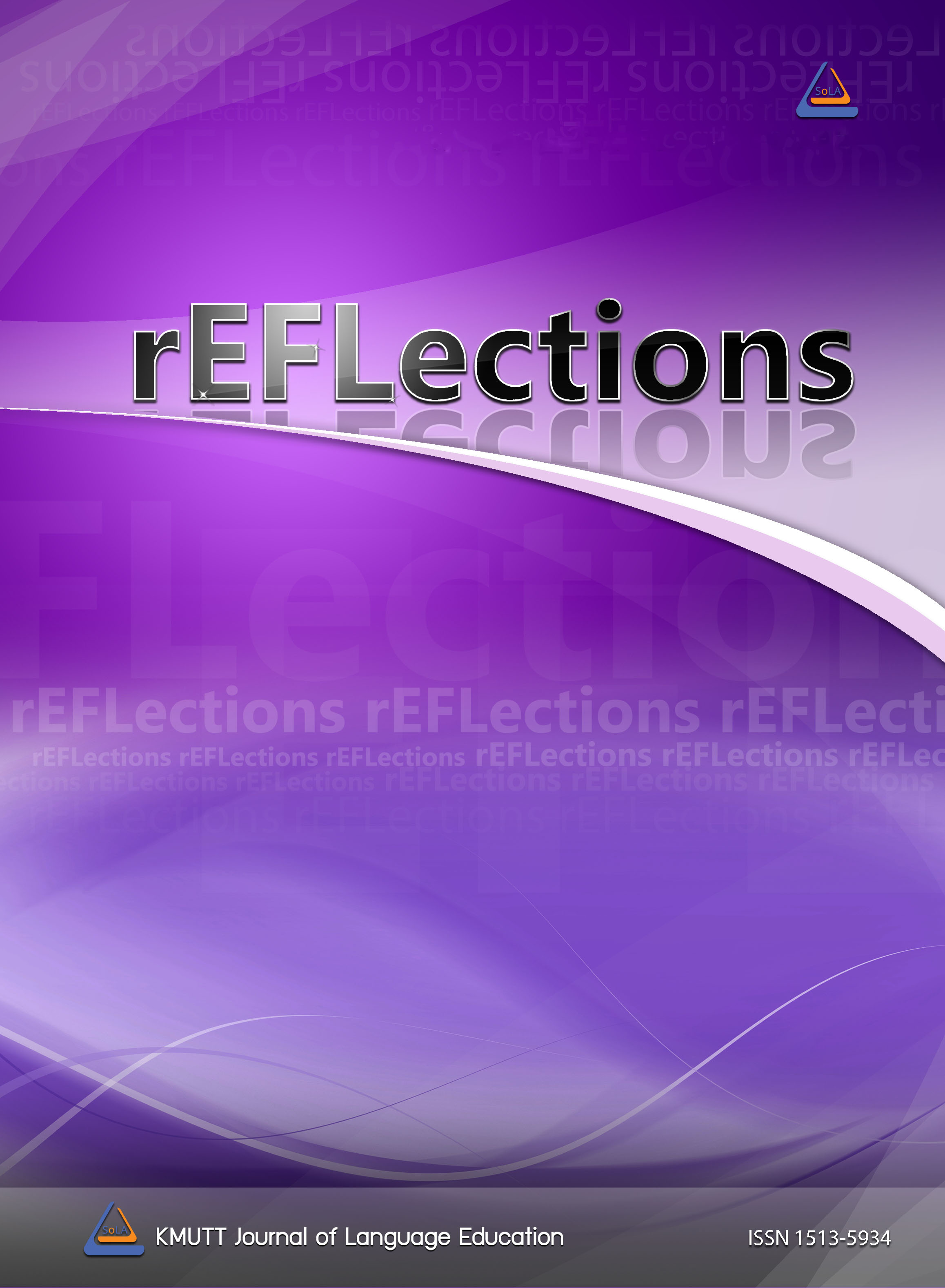Foundation English Course Development for Thai Tertiary Education: Learners’ Perceived Needs and Factor Analysis
Main Article Content
Abstract
A challenge to curriculum designers is what to adapt and include in Foundation English (FE) courses for tertiary education. In Thailand, it is important to explore how Thai EFL university students perceive their own needs in terms of English language learning. The present study aims to explore their perceived needs and to make use of the needs to design appropriate components of FE in a public university in Thailand. An online questionnaire comprising self-rated items on English language skills and written responses was used to capture data from 145 randomly selected university students enrolled in an FE course at the university in the second semester of academic year 2022. The results revealed that speaking was the most wanted-to-learn skill for communication. Moreover, seven other factors were found for the design of FE surrounding English for Academic Purposes (EAP) and English for Specific Purposes (ESP). The components of EAP for FE included Academic English Skills, Advanced Reading Skills, and Paragraph Writing. The elements of ESP for FE included Content-based Language Learning and Career English. These findings have implications for the design of FE curriculum and course component development.
Article Details

This work is licensed under a Creative Commons Attribution-NonCommercial-NoDerivatives 4.0 International License.
References
Al-Hamlan, S., & Baniabdelrahman, A. A. (2015). A needs analysis approach to EFL syllabus development for second grade students in secondary education in Saudi Arabia: A descriptive analytical approach to students’ needs. American International Journal of Contemporary Research, 5(1), 118-145.
Alfaifi, A. A. M., Bahudhailah, M., & Saleem, M. (2022). The gap between perceived and achieved English communication needs of Saudi Management and Business Administration students: An ESP paradigm. International Journal of Learning, Teaching and Educational Research, 21(1), 256-276. https://doi.org/10.26803/ijlter.21.1.15
Bayram, I., & Canaran, Ö. (2020). Identifying the perceived professional development needs of English for specific purposes (ESP) teachers. Ilkogretim Online - Elementary Education Online, 19(3), 1647-1659. https://doi.org/10.17051/ilkonline.2020.734559
Brown, J. D. (1995). The elements of language curriculum: A systematic approach to program development. Heinle & Heinle.
Changpueng, P., & Pattanapichet, F. (2023). A needs analysis of English for meeting lessons for Thai undergraduate Engineering students. LEARN Journal: Language Education and Acquisition Research Network, 16(2), 603-623. https://so04.tci-thaijo.org/index.php/LEARN/article/view/266974
Chemir, S., & Kitila, T. (2022). Learners’ needs analysis for English for academic purposes in Ethiopian higher education institutions: The case of Wachemo University freshman students. Cogent Education, 9(1), 2026190. https://doi.org/10.1080/2331186X.2022.2026190
Darasawang, P. (2007). English language teaching and education in Thailand: A decade of change. In N. D. Prescott (Ed.), English in Southeast Asia: Varieties, literacies, and literatures (pp. 187-204). Cambridge Scholars Publishing.
English Consortium, Commission on Higher Education. (2002). Drafted English curriculum for English foundations I and II. English Consortium, Commission on Higher Education.
Flowerdew, L. (2013). Needs analysis and curriculum development in ESP. In B. Paltrid & S. Starfield (Eds.), The handbook of English for specific purposes (pp. 325-346). John Wiley & Sons, Inc.
Hutchinson, T., & Waters, A. (1987). English for specific purposes: A learning-centred approach. Cambridge University Press.
Moiinvaziri, M. (2014). Students’ voice: A needs analysis of university general English course in Iran. GEMA Online Journal of Language Studies, 14(1), 57-75. https://doi.org/10.17576/GEMA-2014-1401-05
Moore, B. (2020). Evaluating the successes of EAP in-house course design and materials creation at a Thai university. LEARN Journal: Language Education and Acquisition Research Network, 13(2), 243-268. https://so04.tci-thaijo.org/index.php/LEARN/article/view/243712
Munby, J. (1978). Communicative syllabus design. Cambridge University Press.
Murray, N. (2010). Conceptualising the English language needs of first year university students. The International Journal of the First Year in Higher Education, 1(1), 55-64. https://doi.org/10.5204/intjfyhe.v1i1.19
Nakkaew, N. (2021). Reforming university level English education in Thailand to keep pace with world change.
Panyapiwat Journal, 13(2), 354-367. https://so05.tci-thaijo.org/index.php/pimjournal/article/view/251309
Piamsai, C. (2017). An investigation of Thai learners’ needs of English language use for intensive English course development. Pasaa Paritat Journal, 32, 63-97. https://www.culi.chula.ac.th/publicationsonline/files/article2/7PIAoWsuJrMon32830.pdf
Poedjiastutie, D., Akhyar, F., & Masduki, M. (2020). English communication needs in Indonesian university. Journal of English Education, Literature, and Culture, 5(2), 287-303. https://doi.org/10.30659/e.5.2.287-303
Poedjiastutie, D., & Oliver, R. (2017). English learning needs of ESP learners: Exploring stakeholder perceptions at an Indonesian university. TEFLIN Journal, 28(1). https://doi.org/10.15639/teflinjournal.v28i1/1-21
Rabiah, S. (2012, November 7-8). Language as a tool for communication and cultural reality discloser [Paper presentation]. “Rethinking Multiculturalism: Media in Multicultural Society”: 1st International Conference on Media, Communication and Culture, Yogyakarta, Indonesia.
Rahman, M. (2015). English for specific purposes (ESP): A holistic review. Horizon Research Publishing.
Richards, J. C. (2008). Curriculum development in language teaching. Cambridge University Press.
Robbinson, P. (1991). ESP today: A practitioner’s guide. Prentice Hall.
Rovinelli, R. J., & Hambelton, R. K. (1977). On the use of content specialists in the assessment of criterion-referenced test item validity. Dutch Journal of Educational Research, 2, 49-60.
Sanpatchayapong, U. (2017). Development of tertiary English education in Thailand. In E. S. Park & B. Spolsky (Eds.), English education at the tertiary level in Asia (pp. 168-182). Routledge. https://doi.org/10.4324/9781315391588
Supina. (2018). Four basic skills proficiency based on students’ perception in hospitality and tourism study program, Bunda Mulia University. Journal of English Language and Culture, 8(2), 128-139. http://journal.ubm.ac.id/Tabachnick, B. G., & Fedell, L. S. (2019). Using multivariate statistics (7th ed.). Pearson.
Watanapokakul, S. (2022). English for Event Management: A mixed methods study for needs analysis and course design. THAITESOL Journal, 31(1), 1-38. https://so05.tci-thaijo.org/index.php/thaitesoljournal/article/view/257870
Woodrow, L. (2014). Writing about quantitative research in applied linguistics. Palgrave Macmillan.
Zhang, L., Han, J., & Wang, H. (2020). A research of the need analysis of the English majors of Baoding University. Creative Education, 11, 2375-2383. https://doi.org/10.4236/ce.2020.1111174


